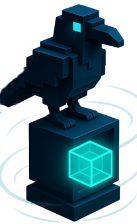What it is
Unsupervised learning explores unlabeled data to uncover structure. Instead of predicting a known label, it looks for groups, lower dimensional structure, and unusual points.
Think “map a new city without a guide”
signals —> measure similarity —> find groups or outliers —> drive investigations
Why it matters for security
- Clustering groups similar events or entities —> campaign views, infrastructure mapping, user cohorts
- Dimensionality reduction compresses features —> faster models, clearer visual triage
- Anomaly detection surfaces rare or suspicious behavior —> focused hunting
Core concepts in plain words
- Unlabeled data no ground truth labels, you learn from the data itself
- Similarity measures Euclidean, cosine, Manhattan decide what “close” means
- Clustering tendency some datasets have no real groups; check before clustering
- Cluster validity internal metrics like silhouette and Davies–Bouldin gauge cohesion —> separation
- Dimensionality many features dilute distance meaning the curse of dimensionality
- Intrinsic dimensionality true degrees of freedom are often smaller than feature count
- Anomaly vs outlier rare points can be errors, noise, or threats — treat as leads, not verdicts
- Feature scaling standardize or min–max so one feature does not dominate distance
Three families with security examples
Clustering
Goal find groups that explain the data
-
Phishing campaign clustering
features —> URL character n-grams, domain age, sender org, brand lookalike
output —> clusters of similar emails —> blocklist at campaign granularity -
Infrastructure fingerprinting
features —> cert hash, ASN, hosting ranges, TLS params
output —> clusters of hosts that likely belong together —> pivot investigations -
User behavior cohorts
features —> hour of activity, device set, location mix
output —> normal usage groups —> tailor anomaly thresholds per cohort
Algorithms to know
- k-means fast on large, spherical clusters; needs k; sensitive to scale
- DBSCAN density based; finds arbitrary shapes; flags noise; needs
epsandmin_samples - HDBSCAN like DBSCAN but handles variable density; chooses clusters automatically
- Agglomerative hierarchical view; good for small to medium sets
- Spectral for non-convex structure; requires a good similarity graph
Dimensionality reduction
Goal compress features while keeping signal
- PCA orthogonal components that explain variance —> fast, great default
- Autoencoders neural compression; reconstruction error doubles as anomaly score
- Random projection very fast approximate compression
- t-SNE and UMAP for visualization and triage maps, not for production distance
Security uses
- Reduce hundreds of URL or header features —> 20 components for faster downstream models
- Visual “attack map” of alerts; analysts spot tight clusters vs scattered anomalies
Anomaly detection
Goal score how unusual each point is
- Isolation Forest isolates points via random splits; high scores are rare or easy to isolate
- One-Class SVM learn a frontier around normal; sensitive to scaling and kernel
- Local Outlier Factor low local density compared to neighbors
- Elliptic Envelope assumes Gaussian normal class
- Autoencoder reconstruction error large error —> unusual
Security uses
- Login anomalies rare geo velocity or device combinations
- DNS exfil unusual query size ratio or domain patterns
- Process trees odd parent–child paths or rare command lines
Practical workflow for SOC teams
- Define the outcome discovery map vs alerting feed
- Pick features human-readable first; encode and scale
- Time-aware split fit on past —> score next period to mimic reality
- Run a small grid of algorithms and parameters
- Validate
- Clustering —> silhouette, Davies–Bouldin, stability across resamples
- Anomaly —> label a small sample, use Precision@k, review load fits capacity
- Choose thresholds score —> action threshold that matches analyst bandwidth
- Monitor drift feature distributions, cluster composition, alert volume; retrain on a cadence
Pitfalls and how to avoid them
- Distances break in high dimensions —> reduce with PCA or select features
- Scale dominates —> standardize before distance based methods
- Parameter sensitivity (k in k-means, eps in DBSCAN) —> sweep and check stability
- t-SNE or UMAP “clusters” look real but are for visualization —> do not gate policy on them
- False positives are common in anomalies —> keep a human-review loop and backstop rules
- Data leakage over time fit compressors and detectors on past only, score on future
Quick chooser
-
Mostly text or URL tokens, high dimensional and sparse
- Cluster campaigns —> HDBSCAN or k-means after PCA
- Anomalies —> Isolation Forest or One-Class SVM after scaling
-
Mixed tabular metadata with unknown structure
- Start k-means and Agglomerative; visualize with PCA; move to HDBSCAN if densities vary
-
You need an alert feed with one score per event
- Isolation Forest or Autoencoder error; calibrate a stable threshold; track Precision@k weekly
-
You want fast compression for downstream supervised models
- PCA or Random projection; keep components that explain enough variance
Evaluation that matches operations
- Clustering internal metrics (silhouette, DBI), cluster stability, analyst-rated sample quality
- Anomaly detection Precision@k, top-N review rate, time-to-detect, PR curves using spot labels
- Report by slices sender, tenant, asset class to expose blind spots
Security focused testing checklist
- Scale features and lock preprocessing to training window
- Check clustering tendency hopkins statistic or quick visual PCA map
- Sweep parameters and test stability across resamples
- Label small samples from each cluster and from top anomalies
- Set and review thresholds so daily alerts fit analyst capacity
- Monitor drift in features, cluster counts, and anomaly score distribution
- Document decisions so clusters and thresholds are auditable
Takeaways
- Unsupervised learning turns unlabeled telemetry into maps and leads
- Start simple PCA —> k-means for maps, Isolation Forest for alerts
- Treat anomalies as investigation cues, not automatic verdicts
- Keep workflows time aware, thresholds operational, and retraining routine
---
[Original Source](_No response_)

